You’ve heard of Golden Retrievers and German Shepherds—but Hungarian dog breeds? Probably not. And that’s exactly why you need to keep reading.
These dogs are nothing short of remarkable. Some look like walking mops. Others are silent hunters or fearless protectors. But all of them are steeped in history. They weren’t bred in pet shops—they were built for a purpose, shaped by the land, and trusted by people for centuries.
Whether herding cattle in the fields or standing guard through the night, these breeds carry instincts you just don’t find everywhere. This isn’t just about dogs—it’s about discovering a side of Hungary that rarely makes headlines.
These breeds are loyal, smart, and uniquely beautiful. And the best part? They’re still here, waiting to be seen. So let’s dive in. You’re about to uncover a world of dogs that deserve way more attention than they get.
Hungarian Dog Breeds
1. Komondor
The Komondor’s signature corded coat isn’t just for looks — it was designed for function. This thick, wool-like covering once protected them from harsh weather and predator bites while guarding livestock.
They were originally bred in Hungary to blend in with sheep, making them an unexpected but highly effective watchdog in the field.
Independent, bold, and all heart
Komondors aren’t your average house pets — they’re assertive, highly observant, and naturally protective. While they bond deeply with their humans and become loyal companions, they don’t seek constant affection or follow you from room to room. Instead, they prefer to keep watch from a distance, stepping in only when they sense a real need.
Naturally wary, selectively social
They don’t instantly warm up to strangers and can be reserved even around other dogs, especially if their guarding instincts kick in.
Early socialization is critical, not just for manners but to help them distinguish between genuine threats and normal life. Without it, they may become overly suspicious or territorial.
A coat that demands patience
That incredible mop-like coat doesn’t happen overnight — it forms naturally but needs years of guided matting and regular separation to achieve its full look. It’s low-shed but not low-maintenance, and keeping it clean can be a serious commitment for any owner.
2. Kuvasz
The Kuvasz isn’t just a large white dog — it’s a breed with a long history of serious responsibility. These were working dogs long before the concept of “pet” existed.
In Hungary, they patrolled vast rural properties, often left alone for days to guard livestock with no human supervision, relying on judgment, memory, and sheer confidence.
Deep loyalty, but earned on their terms
Though often described as aloof, Kuvaszok are anything but indifferent once trust is established, as per WebMD. They don’t bond with everyone, but when they do, they’re a devoted companion for life.
That loyalty shows up in subtle ways — quiet watchfulness, physical closeness, and a willingness to put themselves between you and anything unfamiliar.
Serious minds that need serious engagement
Kuvaszok aren’t easily impressed or distracted, which makes them challenging for first-time owners. Without enough mental stimulation, they tend to grow restless or start making decisions on their own, often ones you won’t like. Puzzle toys won’t cut it; they need structured challenges, varied environments, and responsibilities they can take seriously.
The habits form early
Training can’t wait until later — this breed needs boundaries and socialization from a young age, while their minds are still open to new people, animals, and routines. Once matured, they’re far less flexible, and bad habits become nearly impossible to undo.
3. Mudi
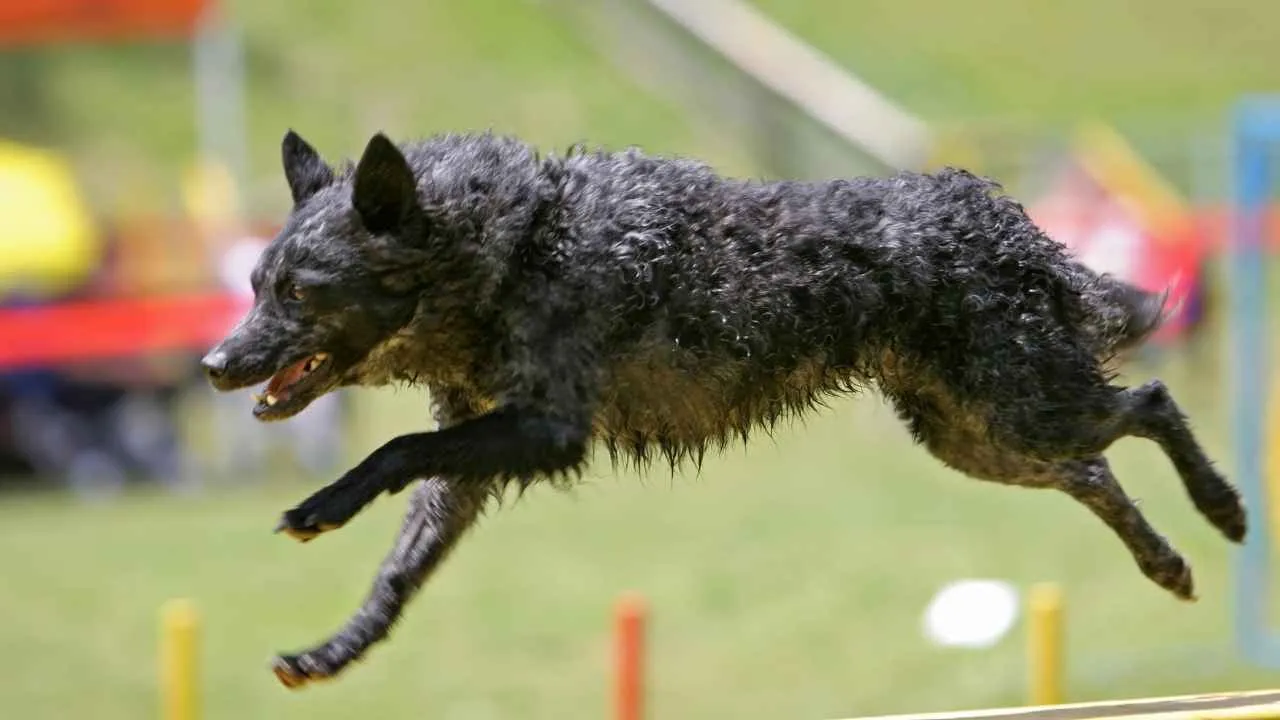
The Mudi isn’t widely known outside Hungary, but among herding experts, it’s considered one of the most versatile breeds. These dogs were never bred in bulk — their numbers stayed small because farmers selected for utility, not popularity. They could herd cattle, guard property, and even hunt wild boar if needed.
Clever minds, fast decisions
Mudi are highly intelligent, but not in a passive, obedient way. They’re thinkers — alert, reactive, and often one step ahead of the person holding the leash.
They don’t need repetitive commands; in fact, they get bored easily without variety or challenge. Their intelligence leans more toward independence than compliance.
A bond that thrives on teamwork
Unlike breeds that work alone, Mudik were bred to work closely with humans in high-pressure environments. Whether it was herding animals through tight terrain or reacting instantly to threats, they learned to trust direction but think on the fly — a balance that’s rare and deeply ingrained.
Small frame, high drive
They’re compact and agile, often mistaken for just energetic pets, but they’re not casual companions. Mudi are best in homes where their instincts are challenged and their minds are kept busy.
They’re well-suited for dog sports like agility, flyball, or search-and-rescue-style tasks, as mentioned in North American Mudi Alliance.
4. Puli
The dense, corded coat of the Puli is one of the most defining characteristics of the breed, as highlighted by the Canadian Kennel Club.
Originally developed to withstand Hungary’s variable climate, it protects them from both freezing temperatures and intense sun. This natural armor also allows them to slip through flocks undetected while herding.
Quick-footed, quicker-minded
Pulik are known for their fast, springy gait — an unusual trait tied directly to their characteristics as agile herders. They don’t just move fast; they think fast.
Their instinctive ability to control livestock with minimal direction is impressive, especially when paired with their need for constant engagement and movement.
They thrive when they’re part of the action
Pulik aren’t background dogs. They like to be in the middle of things, involved in their family’s daily lives in a way that feels purposeful to them.
Whether it’s helping “supervise” chores or alerting you to visitors before the doorbell rings, they bring an energetic presence to everyday routines.
Independent but not distant
Though not clingy lap dogs, Pulik form strong attachments to their humans. With the right socialization, they grow into wonderful companions that balance independence with deep loyalty, always aware of where you are, and just as aware of what you might need next.
5. Pumi
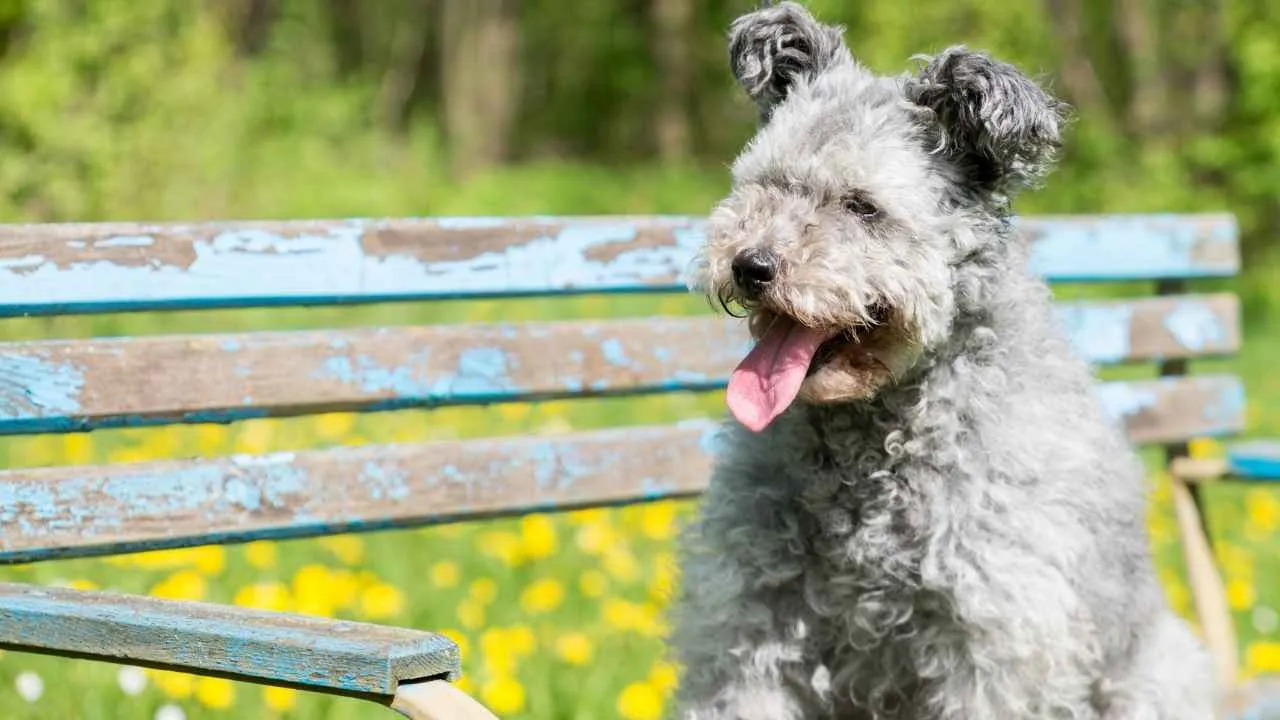
The Pumi was never meant to sit still. Originally bred in western Hungary, it was prized for its ability to control sheep, pigs, and even cattle — animals much larger than itself. Its upright ears, tightly curled tail, and alert eyes reflect a dog that’s always in sync with its environment.
Intelligence paired with emotional range
According to AKC, Pumis are deeply expressive, and their temperament stands out even among herding breeds. They can be vocal, curious, and even comedic — but always with purpose. These aren’t loud dogs for the sake of it; they’re trying to communicate, react, or gather information in real time.

Movement isn’t optional — it’s essential
This breed needs structured exercise far beyond just walks. Without fast-paced games, training drills, or a job to focus on, they can become restless or reactive. Agility courses, fetch in large open spaces, and mental challenges are crucial for maintaining balance.
Trainable, but on their terms
Pumi can excel in obedience, but they’re not blindly compliant. They need training that respects their independence and matches their energy. Harsh methods backfire; consistency and variety work far better.
A soft side beneath the spark
Despite their quick reflexes and strong will, a well-socialized Pumi reveals a gentle side — affectionate with family and responsive to emotional tone, without ever losing that curious edge in their temperament.
6. Wirehaired Vizsla
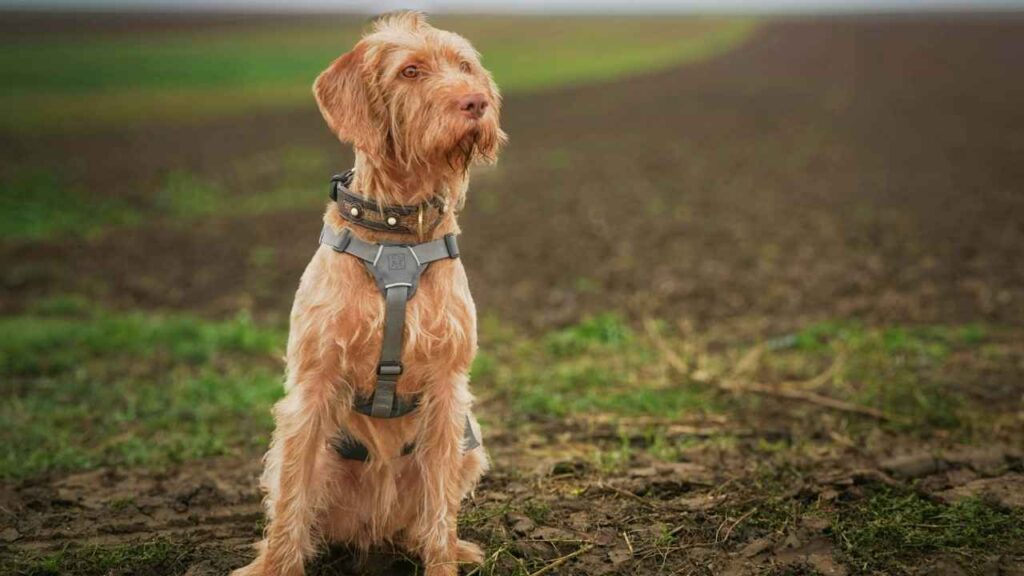
Developed in the 20th century by hunters who needed a sturdier, all-weather version of the traditional Vizsla, the Wirehaired Vizsla has denser bone, a wiry coat, and more endurance in rough terrain. These changes made it particularly useful for hunting in thick brush and colder climates.
Not just a rugged worker
Though bred for utility, this dog’s behavior at home reveals a more sensitive nature. They form strong emotional bonds, often following their people from room to room. They’re observant, responsive to voice tone, and may become anxious if ignored or under-stimulated for long.
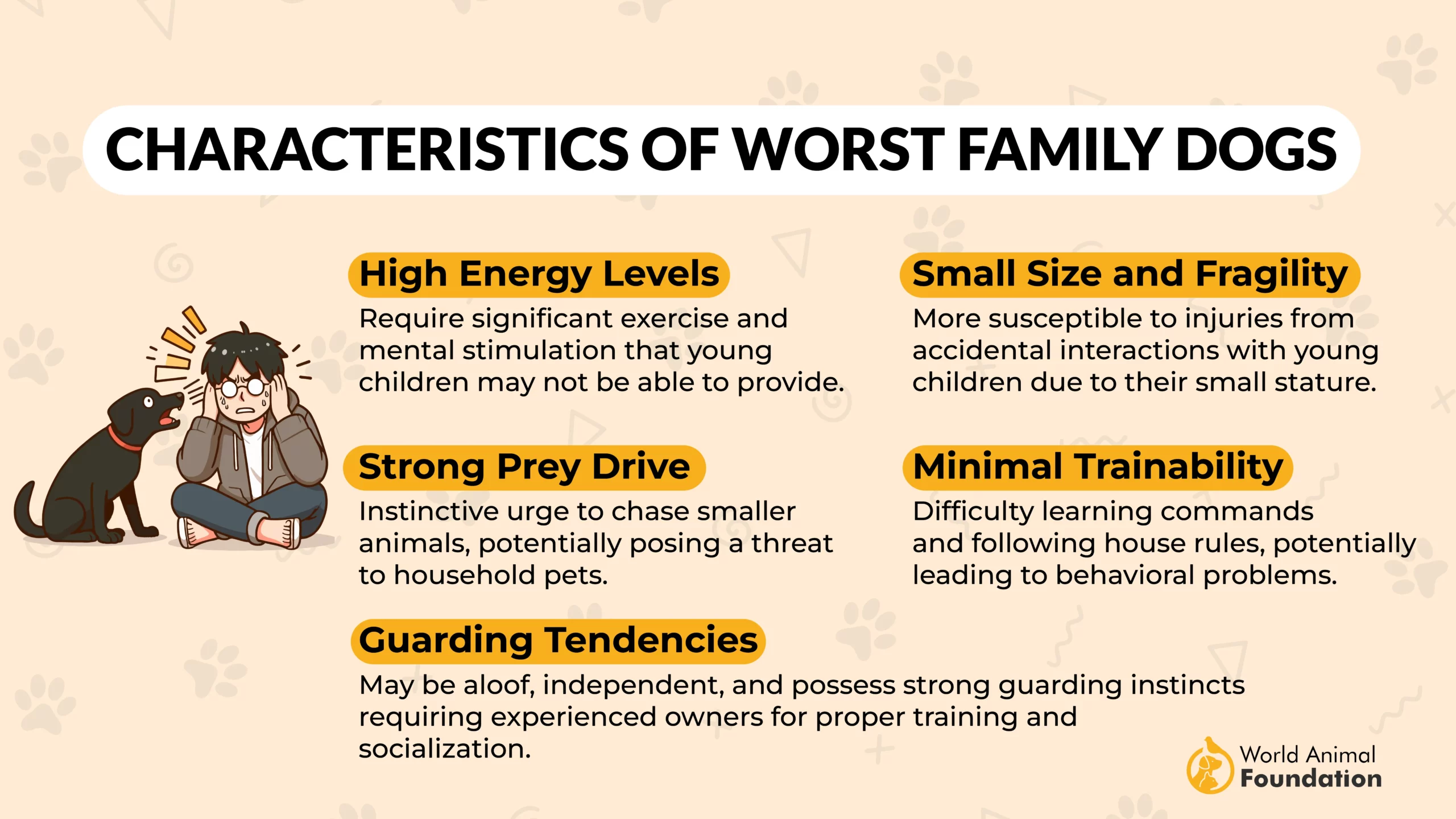
Profile
Recognition came with persistence
The breed took decades to gain widespread attention, especially outside Hungary. As the Showsight Magazine claims, it was officially recognized by the American Kennel Club only in 2014, after consistent breeding and documentation demonstrated it was distinct in both form and temperament from its smooth-coated cousin.
Energy with a purpose
They’re not hyperactive, but they do need daily mental and physical outlets. Long hikes, advanced scent work, and problem-solving games keep them content. Without these, frustration can show up in barking or obsessive pacing.
Adaptable, but always alert
Though affectionate with family, Wirehaired Vizslas remain vigilant outdoors. Their background in tracking and pointing still influences their instinct to pause, focus, and react quickly to movement in unfamiliar settings.
7. Transylvanian Hound
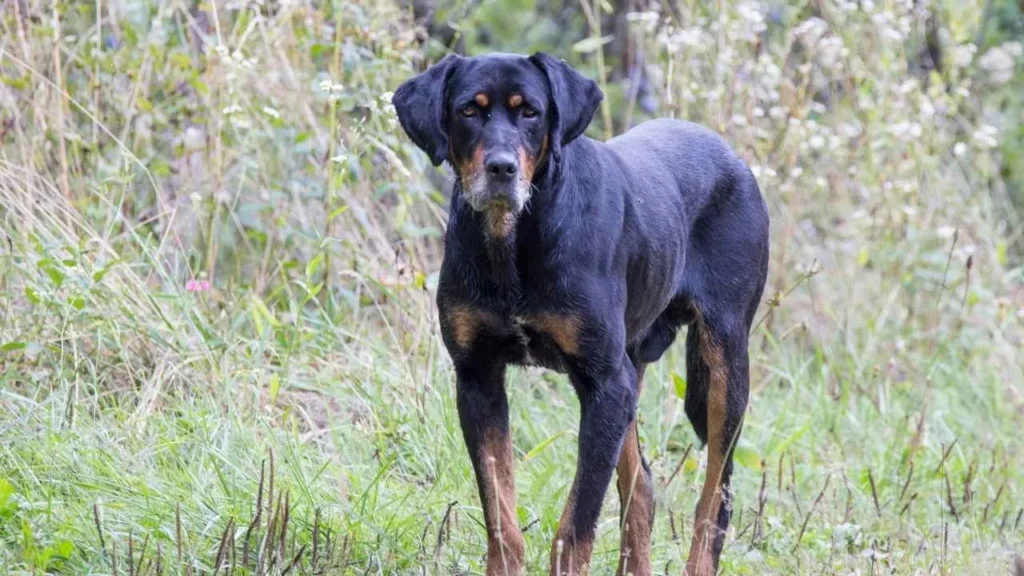
This breed didn’t evolve in comfort. It was shaped by the dense forests and harsh mountain regions of Transylvania, where it hunted large game like boar and bear. Its sturdy frame, strong legs, and remarkable stamina reflect generations of selective breeding for endurance over style.
Instinct before impulse
Unlike some scent hounds that follow any trail, the Transylvanian Hound is a thinker. It doesn’t chase mindlessly; it tracks with intent. This makes it easier to train for focused activities, though it still needs a confident, consistent handler to channel that drive constructively.
Quiet at home, sharp outside
At rest, it’s calm and collected. But outdoors, its senses are constantly active. Its deep, resonant bark isn’t used casually — it’s a response to specific scents or movement, often signaling with precision rather than noise for the sake of it.
Independent but not detached
This breed doesn’t need constant affection to bond deeply. It prefers clear communication and shared tasks over cuddles. When treated with fairness and given meaningful work — whether in tracking, hiking, or training — it becomes a steady, reliable partner.
Conclusion
Hungarian dog breeds are more than rare companions — they’re reflections of a country’s legacy, shaped by purpose and perseverance. Each breed tells a different story, from the icy mountains of Transylvania to the sun-drenched fields where shepherds still rely on instinct over instruction.
What makes them unforgettable isn’t just their unique appearance or ancient roles — it’s their spirit. Whether calm and watchful or bold and playful, these dogs aren’t here to fit in — they’re here to stand out.
And when it comes to health, resilience is built right in. These breeds evolved through harsh conditions, developing traits that go beyond looks.


